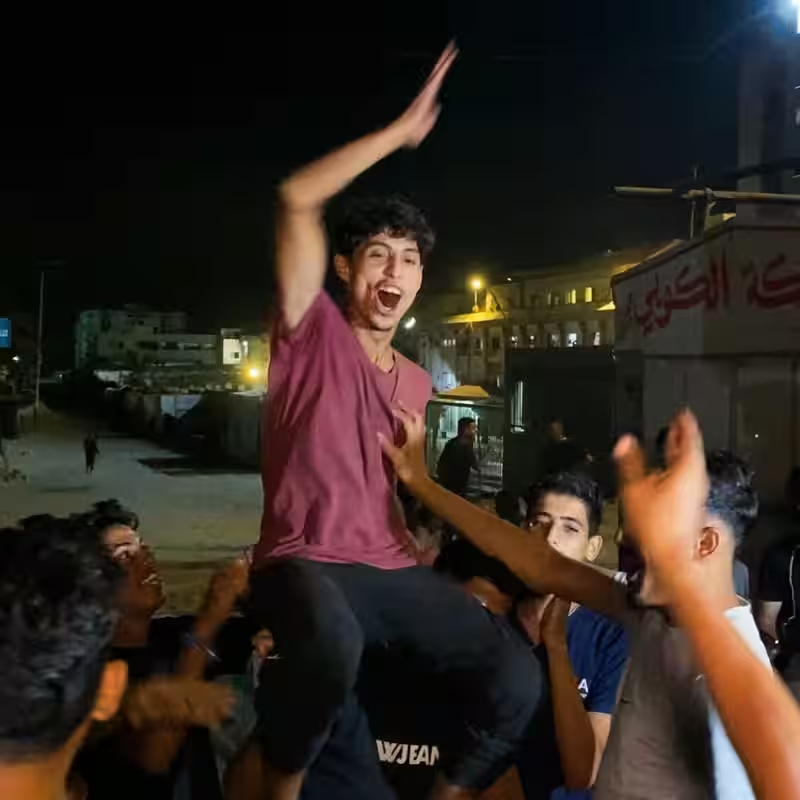Table of Contents
- Relief Amid Ruins
- What We Know About the Deal
- What Remains Unclear
- Voices from Gaza: Hope and Skepticism
- Humanitarian Crisis Far From Over
- Sources
Relief Amid Ruins
In the shattered streets of Deir al-Balah and the tent cities of Khan Younis, news of a potential Israel-Hamas ceasefire deal sparked cautious celebration on Thursday morning. After nearly two years of relentless bombardment, displacement, and deprivation, many Palestinians in Gaza allowed themselves a rare moment of hope.
“We still don’t understand anything,” said Awni Sami Abu Hasera, 36, who lost his home and seafood business in Gaza City during the latest Israeli ground offensive. Now living in a makeshift tent, he added: “But if the war stops, maybe we can finally breathe.”
Despite the joy, uncertainty looms large. While Israeli families celebrated the prospect of hostages returning home, Gazans are left wondering: Will this deal actually bring peace—or just another pause before the next round of violence?
What We Know About the Deal
The agreement, announced overnight, is being hailed as a potential end to the deadliest phase of the conflict since October 2023. Key reported elements include:
- Phased release of Israeli hostages held by Hamas
- Gradual withdrawal of Israeli forces from densely populated areas of Gaza
- Expanded humanitarian aid corridors
- Possible prisoner exchange involving Palestinian detainees in Israeli jails
However, none of these points have been officially confirmed in full detail by either side. Neither the Israeli government nor Hamas has released a written copy of the terms.
What Remains Unclear
For millions in Gaza, the biggest questions remain unanswered:
| Question | Status |
|---|---|
| Will the ceasefire be permanent or temporary? | Unconfirmed—no duration specified |
| Will reconstruction begin immediately? | No commitments from international donors yet |
| Will displaced families be allowed to return home? | Israeli military still occupies parts of northern Gaza |
| Who will govern post-war Gaza? | Hamas’s future role remains contested |
Voices from Gaza: Hope and Skepticism
Many Gazans expressed cautious optimism—but also deep fatigue. “We’ve heard promises before,” said Fatima Al-Rashid, a mother of four living in Rafah. “Last time, the ceasefire lasted three weeks. Then the bombs came back.”
Others worried the deal prioritizes Israeli hostages while sidelining Palestinian suffering. “They talk about 100 hostages,” said university student Karim Nasser. “What about the 40,000 dead here? Who speaks for us?”
Still, spontaneous gatherings broke out in several neighborhoods, with children waving white flags and elders offering prayers of gratitude. For a few hours, the sound of celebration briefly drowned out the hum of drones overhead.
Humanitarian Crisis Far From Over
Even if fighting stops, Gaza’s humanitarian emergency is far from resolved. As of Thursday:
- Over 80% of the population remains displaced
- Clean water is available to fewer than 1 in 10 households
- Hospitals operate at 15% capacity due to fuel shortages
- Food aid reaches only a fraction of those in need
Aid agencies warn that without immediate, large-scale access—and security guarantees for aid workers—famine and disease could claim more lives than the war itself.
Bottom Line
The Israel-Hamas deal has brought a flicker of light to Gaza’s darkest chapter. But without transparency, enforceable terms, and a real commitment to rebuilding lives—not just pausing violence—the relief may be tragically short-lived.
Sources
The New York Times: Gazans Welcome Israel-Hamas Deal, but Key Questions Remain




